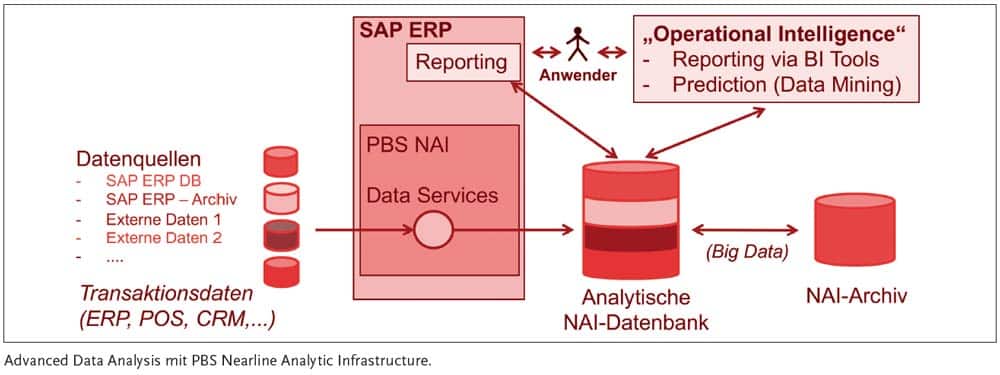Analytical Information Lifecycle Management
![[shutterstock.com:Funny Drew, 629320463]](https://e3magpmp.greatsolution.dev/wp-content/uploads/2017/06/shutterstock_629320463.jpg)

In SAP environments, data analysis is fueled by the corresponding capabilities of the Hana database. Here, it makes little sense to keep all the data of an application area permanently in Hana's main memory over long periods of time.
Particularly in view of the enormous growth in data due to digital transformation processes, the importance of active and analytical information lifecycle management is growing, which ensures that information is stored in a cost- and benefit-oriented manner using various storage technologies, while at the same time remaining analyzable.
According to SAP, data archiving and nearline storage remain valid strategies for efficient data management under the new Hana platform and the current Business Suite or Business Warehouse.
The importance of these strategies is confirmed by studies from Gartner, according to which 75 percent of applications for archiving structured data are already expected to support Big Data analyses.
In addition, since the development of in-memory technology, analytical and transactional worlds are growing closer together. In addition to business warehouse systems, rapid analyses and evaluations are increasingly taking place directly in the ERP.
For more than 25 years, PBS Software GmbH has supported the integration of archive and online data for simultaneous analysis in SAP environments. Due to continuous further developments, PBS software is also very well prepared for the trends mentioned above.
A pioneer in the use of column-based databases for the storage and rapid analysis of structured archive data, PBS recognized the need for nearline storage in operational systems early on and responded by developing the PBS Nearline Analytic Infrastructure (NAI).
In the meantime, this solution is technologically very advanced and is used by numerous customers internationally. In addition to SAP-centric data, NAI can also be used to evaluate non-SAP data via the SAP front end.
The integration of NAI with powerful, market-proven data analysis tools from the business intelligence and data mining sectors enables modern, future-oriented analysis scenarios.








